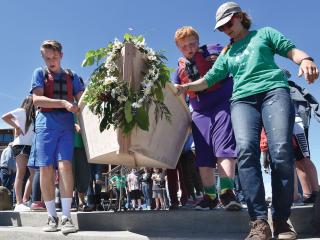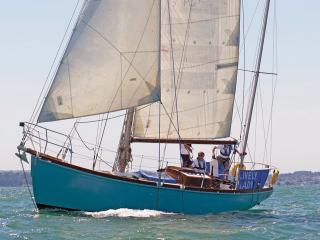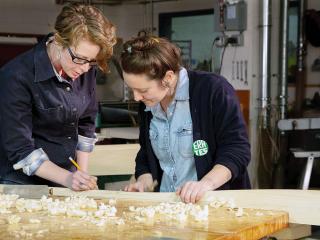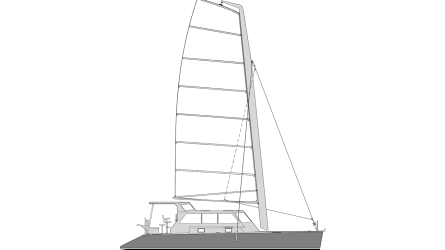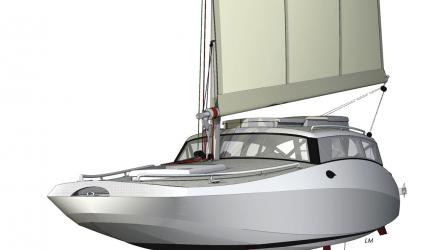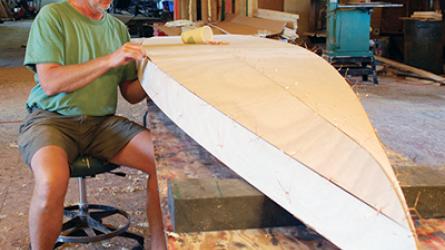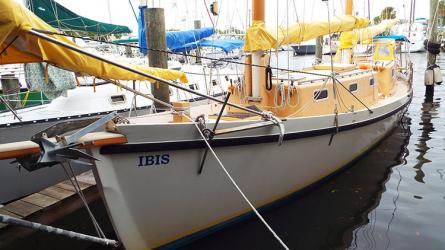May / June 2020
MAYFLOWER II’s Rebirth
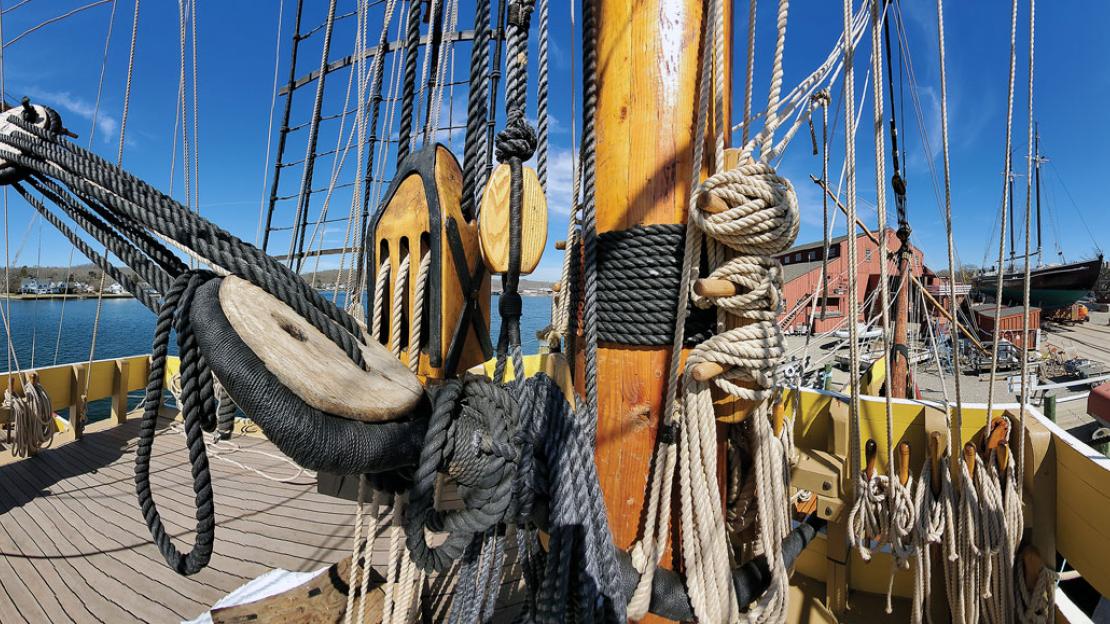
Among the dramatic changes during the MAYFLOWER II reconstruction has been the complete replacement of her rigging, reducing weight aloft by about one-third. The standing rigging is of Mystic Three Strand, made by New England Rope.
Through the ages, stories are written and rewritten. Just as a prism shifted to change its angle of incidence scatters a slightly different spectrum on a new surface, so stories can subtly alter over time in each generation’s retelling. One story now being retold for a new generation is that of a ship—MAYFLOWER II, one of the most prominent “replicas,” or reproduction ships, in the United States.
In 1957, the ship completed its one great voyage, across the Atlantic from Plymouth, England, to Plymouth, Massachusetts, with none other than the great square-rig sailor and historian Alan Villiers in command. An expression of gratitude from the English people to the Americans after World War II, she retraced the wake of the famous 1620 Pilgrim voyage and was turned over to Plimoth Plantation. Plimoth, which opened in 1947, was one of a then-new and now-venerable constellation of living-history institutions that included Colonial Williamsburg, Virginia, opened in 1926; Mystic Seaport Museum in Connecticut, in 1931; Sturbridge Village, Massachusetts, in 1946; and Jamestown Settlement, Virginia, in 1957.
Plimoth Plantation in the early 1950s hired the maritime historian William Avery Baker, then a Bethlehem Steel Shipbuilding Division naval architect, to draw up plans for a new MAYFLOWER. Baker was already known for his work during the restoration of GJØA in San Francisco in the late 1940s, and after returning to his company’s headquarters in Massachusetts he re-created drawings of MAYFLOWER II in his spare time after extensive research in Europe. In England, meanwhile, the enthusiastic Warwick Charlton had similar dreams of building such a ship. Events seemed to conspire, the way historical events, in hindsight, sometimes do.\The deal was struck. Charlton arranged construction at Upham Shipyard, in Brixton, Devon, to Baker’s beautifully drawn plans. Plimoth agreed to care for the ship in perpetuity. The launching in 1956 was festive. The flags flew; the horns sounded. At both the beginning and conclusion of her engineless transatlantic passage, MAYFLOWER II was hailed as a triumph.
To read the rest of this article:
Click the button below to log into your Digital Issue Access account.
No digital access? Subscribe or upgrade to a WoodenBoat Digital Subscription and finish reading this article as well as every article we have published for the past 50-years.
ACCESS TO EXPERIENCE
2-for-1 Print & Digital Subscription Offer
For this holiday season, WoodenBoat is offering our best buy one, get one deal ever. Subscribe with a print & digital subscription for $42.95, and we’ll give you a FREE GIFT SUBSCRIPTION to share with someone special.
1 YEAR SUBSCRIPTION (6 ISSUES)
PLUS ACCESS TO MORE THAN 300 DIGITAL BACK ISSUES
PRINT+DIGITAL $42.95
Subscribe
To read articles from previous issues, you can purchase the issue at The WoodenBoat Store link below.
 Purchase this issue from
Purchase this issue from
